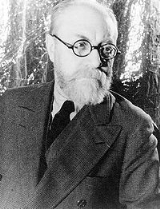
, printmaker
, and sculptor
, but is known primarily as a painter. Matisse is commonly regarded, along with Picasso
and Marcel Duchamp
, as one of the three artists who helped to define the revolutionary developments in the plastic arts in the opening decades of the 20th century, responsible for significant developments in painting and sculpture.
At each stage I reach a balance, a conclusion. At the next sitting, if I find that there is a weakness in the whole, I make my way back into the picture by means of the weakness — I re-enter through the breach — and I reconceive the whole. Thus everything becomes fluid again.![]()
You study, you learn, but you guard the original naiveté. It has to be within you, as desire for drink is within the drunkard or love is within the lover.![]()
There is nothing more difficult for a truly creative painter than to paint a rose, because before he can do so he has first to forget all the roses that were ever painted.![]()
A picture must possess a real power to generate light ... for a long time now I've been conscious of expressing myself through light or rather in light.![]()
Impressionism is the newspaper of the soul.![]()
[I wouldn't mind turning into] a vermilion goldfish.![]()
Drawing is like making an expressive gesture with the advantage of permanence.![]()
It is only after years of preparation that the young [artist] should touch color — not color used descriptively, that is, but as a means of personal expression.![]()

